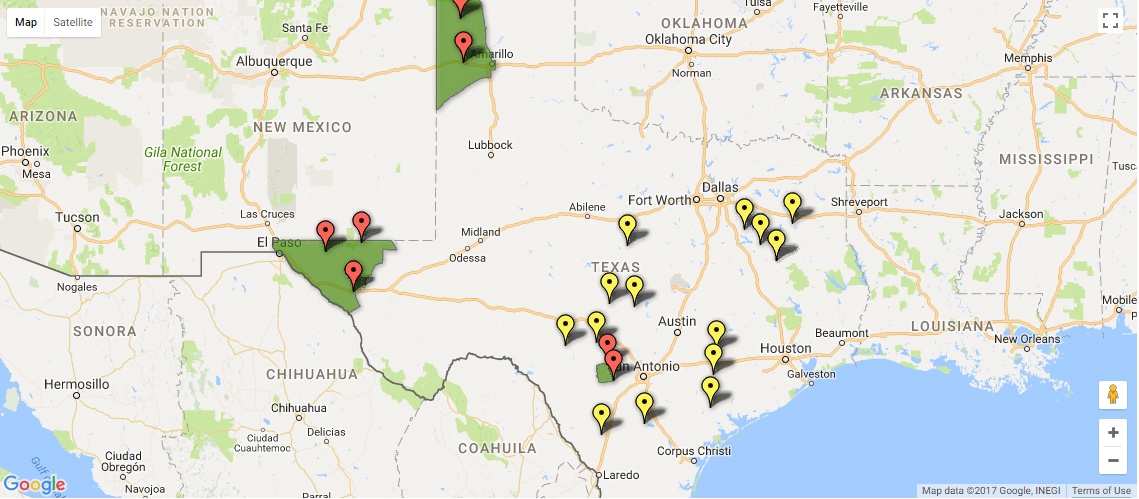Deer Hunters Warned About Chronic Wasting Disease
Chronic Wasting Disease Threatens Deer Population, Hunting Season
Why This Deer Disease Could Change the Way Americans Hunt Forever
When deer season opened in November, so, too, did the media’s attention to chronic wasting disease (CWD). A local station in Austin covered the story on CWD in Michigan “as thousands of Michigan hunters dragged their deer to check stations to be tested (for CWD).” In Montana, deer hunting season ended in late November, but their parks and wildlife department then sold another 1,000 deer licenses as part of a special hunt to gather additional samples to determine how widespread CWD is in the state. The special hunt was reportedly spurred by the discovery of CWD in two mule deer bucks earlier in the fall. In multiple news reports in other states, hunters were advised that CWD test results would take longer than usual due to a national shortage of testing kits.
But what about Texas? Is there cause for CWD concern here? Is CWD concern real or just the winter version of summer’s shark attack new stories? Here are six things to know about CWD in Texas.
#1 What is Chronic Wasting Disease (CWD)? Per the Center for Disease Control and Prevention (CDC), CWD is in the family of transmissible spongiform encephalopathies, rare progressive neurodegenerative disorders that affect both humans and animals. CWD affects deer, elk, reindeer, sika deer and moose. It may take over a year before an infected animal develops symptoms, which can include drastic weight loss (wasting), stumbling, listlessness, and other neurologic symptoms. CWD can affect animals of all ages and some infected animals may die without ever developing the disease. CWD is fatal to animals and there are no treatments or vaccines.
#2 How does CWD spread? The Chronic Wasting Disease Alliance says it’s not known exactly how CWD is transmitted. “The infectious agent may be passed in feces, urine or saliva. Transmission is thought to be lateral (from animal to animal). Although maternal transmission (from mother to fetus) may occur…Concentrating deer and elk in captivity or by artificial feeding probably increases the likelihood of both direct and indirect transmission between individuals. Contaminated pastures appear to have served as sources of infection in some CWD epidemics.”
#3 Can it spread to humans? According to the CDC, while, to date, there have been no reported cases of CWD infection in people, “animal studies suggest CWD poses a risk to some types of non-human primates, like monkeys, that eat meat from CWD-infected animals or come in contact with brain or body fluids from infected deer or elk. These studies raise concerns that there may also be a risk to people.” The Virology Blog notes that although the risk of CWD appears to be low, “hunters should not shoot or consume an elk or deer that is acting abnormally or appears to be sick, to avoid the brain and spinal cord when field dressing game, and not to consume brain, spinal cord, eyes, spleen, or lymph nodes.”
#4 Has Texas been impacted by CWD? Yes. Here is the rundown from Texas Parks & Wildlife Department (TPWD):
“The first case of CWD in Texas was discovered in 2012 in free-ranging mule deer in an isolated area of far West Texas. The disease has since been detected in a total of 13 mule deer in that West Texas population located in the Hueco Mountains, and 3 mule deer and 1 elk in Dallam and Hartley counties, located in the northwest Panhandle.
“The first case of CWD in Texas white-tailed deer was found in a deer-breeding facility in 2015 as a result of routine disease monitoring. Increased testing requirements resulted in the detection of CWD in 4 additional deer breeding facilities and two release sites adjacent to the CWD-positive deer breeding facilities. CWD was detected in a free-ranging white-tailed deer in Medina County in 2017.
“A total of 50 CWD positive deer and elk have been discovered in Texas to date, 32 of those from white-tailed deer either in, or originating from captive deer breeding facilities, 16 from free-ranging mule deer, 1 free-ranging elk, and 1 free-ranging white-tailed deer.”
#5 How do I know if the deer I harvested has CWD? As of this year, if you hunt and harvest your deer in certain zones, you must have the deer tested for CWD. Per Texas Parks & Wildlife (TPWD):
“New regulations for the 2017-18 hunting season include the establishment of CWD management zones. Hunters who harvest mule deer, white-tailed deer, elk, red deer, or other CWD susceptible species within the Trans-Pecos, Panhandle, and South-Central Texas CWD Containment and Surveillance Zones are REQUIRED to bring their animals to a TPWD check station within 48 hours of harvest. TPWD urges voluntary sampling of hunter harvested deer outside of these zones. The new rules also impose restriction of permitted deer movements to and from CWD zones.”
If you are not in a mandatory zone, you can have your deer tested at a voluntary check station. In January 2017, the CWD was discovered in the 1 free-ranging white-tailed deer noted above, a 1 ½ year-old buck harvested in Medina County, because the hunter brought the deer in for voluntary sampling. To find a check station near you, visit the TPWD website here.
#6 Where can I get the latest information on CWD in Texas? TPWD has a wealth of information on its website, including the latest news, resources, fact sheet, and more. Get it all at tpwd.texas.gov/huntwild/wild/diseases/cwd. For more information on CWD generally, including national and international CWD news, the Chronic Wasting Disease Alliance has a robust, information-packed website at cwd-info.org.
Photo, above, map of CWD check stations via TPWD.









